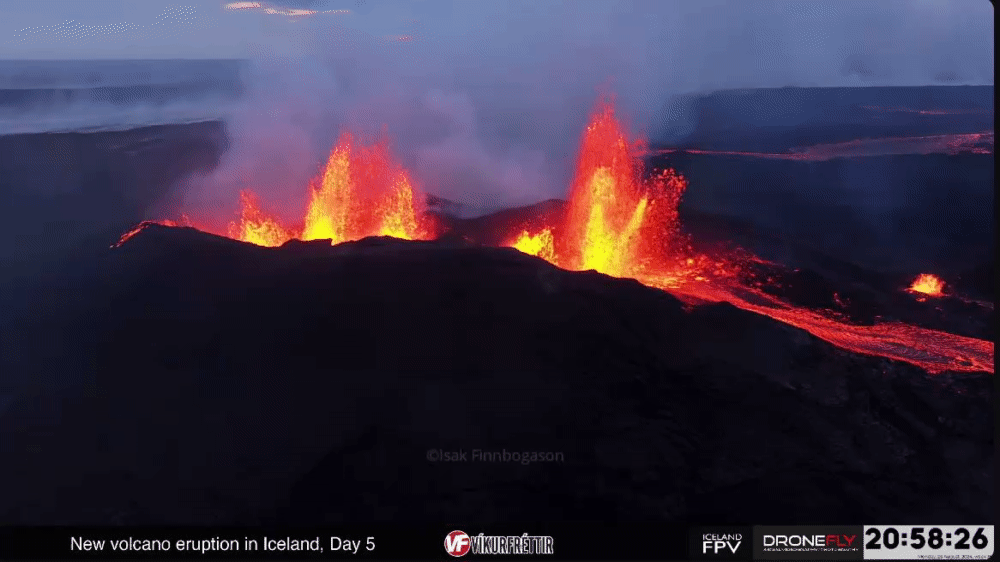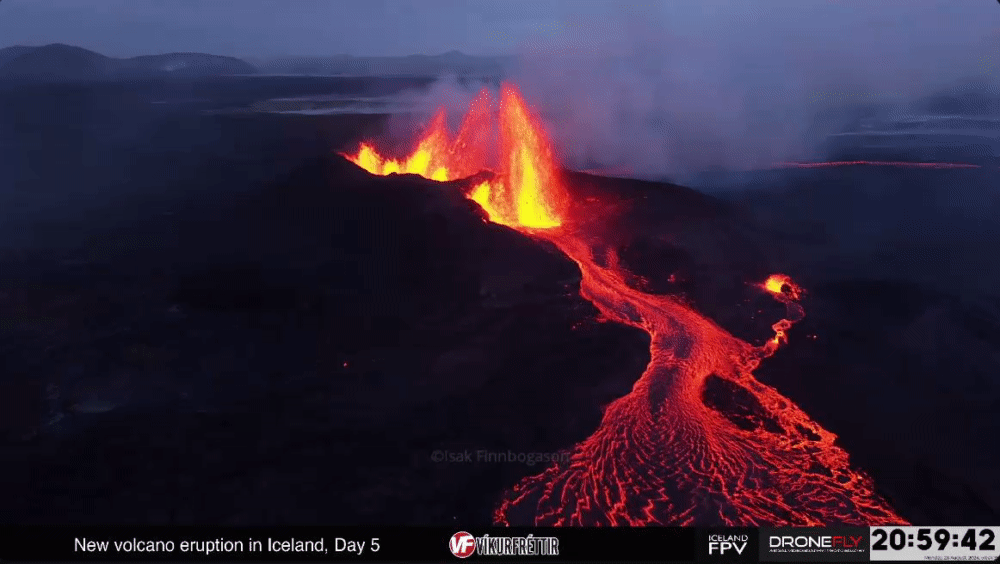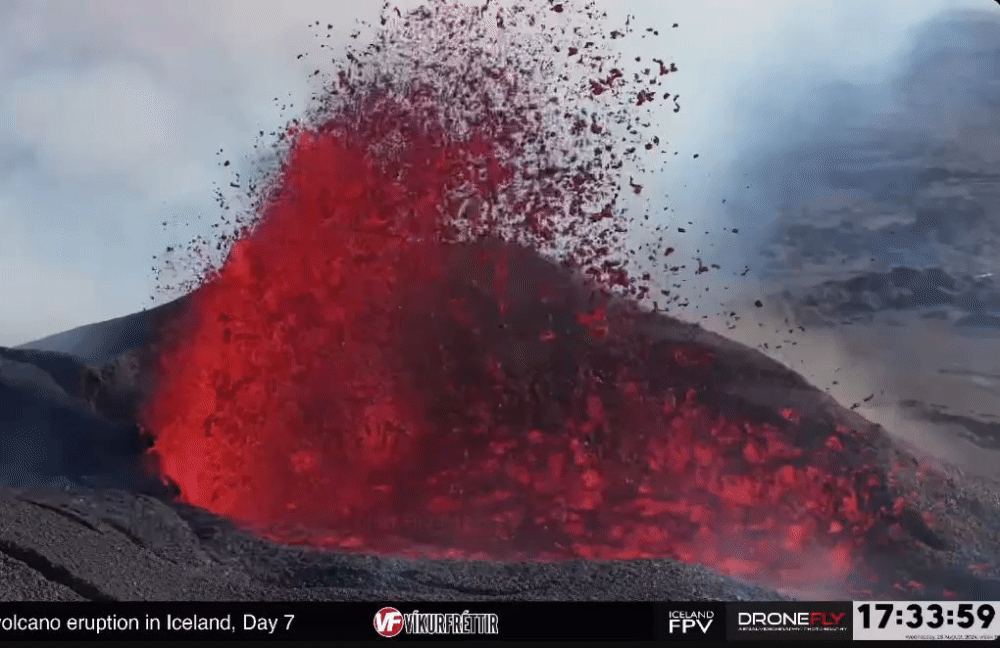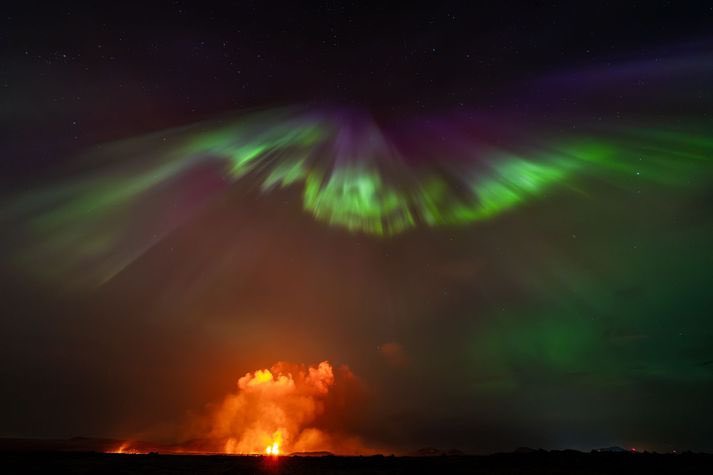WKN Weer, Klimaat en Natuurrampen
Lees alles over het onstuimige weer op onze planeet, volg orkanen en tornado's, zie hoe vulkanen uitbarsten en hoe Moeder Aarde beeft bij een aardbeving. Alles over de verwoestende kracht van onze planeet en tal van andere natuurverschijnselen.



Dat wisten we nog niet ...quote:Op woensdag 26 juni 2024 17:29 schreef Frutsel het volgende:
Onderzoek: IJslandse vulkaanuitbarstingen kunnen decennialang aanhouden - https://nos.nl/l/2526239


https://www.ijsland-enzo.(...)spagina.asp?tabsel=0quote:Verhoogde kans op een uitbarsting binnen de grenzen van Grindavík
De kans op een magma-run of een nieuwe vulkaanuitbarsting in de komende drie weken is aanzienlijk toegenomen. Dit staat in een bericht van het Met Office.
Er staat dat volgens waarschijnlijkheidsberekeningen ongeveer dertien miljoen kubieke meter magma aan de magmakamer onder Svartsengi is toegevoegd.
"Vandaag heeft de toegevoegde hoeveelheid magma de ondergrens bereikt van de hoeveelheid magma die noodzakelijk wordt geacht om een nieuwe magma-run en zelfs een vulkaanuitbarsting te veroorzaken", aldus de aankondiging.


https://www.ruv.is/englis(...)n-three-weeks-417878quote:Op donderdag 18 juli 2024 17:31 schreef aloa het volgende:
[..]
https://www.ijsland-enzo.(...)spagina.asp?tabsel=0
Een uitgebreider artikel
In this world of evil and darkness I'm looking for the one girl that has the power to bring light into my heart. A light so pure that my evil thoughts about this world and the people living on it will vanish and I'll finally experience true love.


Er is nog steeds een aanzienlijke kans op een magma-run binnen Grindavík
De seismische activiteit op het schiereiland Reykjanes neemt toe en er wordt aangenomen dat er in de komende drie tot vier weken een uitbarsting zal plaatsvinden. Er zou een kloof kunnen ontstaan binnen Grindavík.
Landstijging gaat verder in Svartsengi in Reykjanes en de kans is groot dat er een kloof ontstaat binnen Grindavík. De seismische activiteit in het gebied is de afgelopen weken toegenomen. De risicobeoordeling is dinsdag bijgewerkt, waarbij het risico voor gebied vier, waar Grindavík ligt, als "aanzienlijk" wordt beoordeeld vanwege uitbarstingen, lavastromen en gasverontreiniging, vergeleken met "enkele".
Öhanna Malen Skúladóttir, expert op het gebied van natuurrampen bij het IJslandse Meteorologische Bureau, zegt dat uit gegevens blijkt dat de laatste uitbarstingen zich verder naar het zuiden hebben verplaatst, en dat de trend er daarom op wijst dat er mogelijk een ventilatieopening in Grindavík opengaat.
“Er is sprake van een voortdurende accumulatie van magma in de magmakamer onder Svartsengi en er wordt geschat dat er sinds de laatste uitbarsting ruim 13 miljoen kubieke meter is bijgekomen, wat boven onze drempelwaarden ligt. Er zijn uitbarstingen geweest aan die grenzen, maar als dit zich gedraagt als de Krafla-uitbarstingen, is er meer magma nodig voor elke magmastroom. We gaan ervan uit dat er zich 13 tot 19 miljoen kubieke meter magma moet ophopen, maar de laatste uitbarsting begon met ongeveer 20 miljoen kubieke meter magma. Als dit in een vergelijkbaar tempo doorgaat, verwachten we binnen de komende drie tot vier weken een uitbarsting."
https://www.ijsland-enzo.(...)spagina.asp?tabsel=0
De seismische activiteit op het schiereiland Reykjanes neemt toe en er wordt aangenomen dat er in de komende drie tot vier weken een uitbarsting zal plaatsvinden. Er zou een kloof kunnen ontstaan binnen Grindavík.
Landstijging gaat verder in Svartsengi in Reykjanes en de kans is groot dat er een kloof ontstaat binnen Grindavík. De seismische activiteit in het gebied is de afgelopen weken toegenomen. De risicobeoordeling is dinsdag bijgewerkt, waarbij het risico voor gebied vier, waar Grindavík ligt, als "aanzienlijk" wordt beoordeeld vanwege uitbarstingen, lavastromen en gasverontreiniging, vergeleken met "enkele".
Öhanna Malen Skúladóttir, expert op het gebied van natuurrampen bij het IJslandse Meteorologische Bureau, zegt dat uit gegevens blijkt dat de laatste uitbarstingen zich verder naar het zuiden hebben verplaatst, en dat de trend er daarom op wijst dat er mogelijk een ventilatieopening in Grindavík opengaat.
“Er is sprake van een voortdurende accumulatie van magma in de magmakamer onder Svartsengi en er wordt geschat dat er sinds de laatste uitbarsting ruim 13 miljoen kubieke meter is bijgekomen, wat boven onze drempelwaarden ligt. Er zijn uitbarstingen geweest aan die grenzen, maar als dit zich gedraagt als de Krafla-uitbarstingen, is er meer magma nodig voor elke magmastroom. We gaan ervan uit dat er zich 13 tot 19 miljoen kubieke meter magma moet ophopen, maar de laatste uitbarsting begon met ongeveer 20 miljoen kubieke meter magma. Als dit in een vergelijkbaar tempo doorgaat, verwachten we binnen de komende drie tot vier weken een uitbarsting."
https://www.ijsland-enzo.(...)spagina.asp?tabsel=0
v


quote:Strong glacial flood in Mýrdalsjökull, Aviation Color Code for Katla raised to Yellow, Iceland
A strong glacial flood began in Mýrdalsjökull, an ice cap atop the Katla volcano in southern Iceland, around 11:00 UTC on July 27, 2024. This event prompted authorities to raise the Aviation Color Code for Katla volcano to Yellow.
The glacial flood increased the flow rate of the Skálm River to more than 1 000 m3 (35 300 feet3), resulting in the destruction of part of the ring road and a bridge over the river.
The National Police Commissioner’s Public Defense declared a level of uncertainty in consultation with the police chief in South Iceland. Additionally, the Icelandic Met Office (IMO) raised the Aviation Color Code for Katla volcano to Yellow.
The flow had decreased significantly by 21:00 UTC on July 27, IMO reported, adding that there were no signs of runoff reaching Múlakvísl or other rivers from Mýrdalsjökull.
“The Norwegian Meteorological Agency continues to monitor the area and closely monitor unrest and seismic activity under the glacier. It can take up to 24 hours for the activity to return to what is known as ‘normal background activity’, so this scenario can be declared over,” IMO said.
There are no signs in the Norwegian Meteorological Agency’s data that a volcanic eruption caused the glacier run.
Although it was an unusually large run, this event was caused by geothermal heat in the glacier’s cauldrons.
A GPS meter located on Austmannsbunga shows clear signs that the changes measured in the caldera are a regular glacier run. However, it is unclear what caused more water to be released than is generally the case from such runs.
The Coast Guard went on a patrol flight with scientists from the Meteorological Office and the University of Iceland to investigate the situation. During that flight, it was confirmed that runoff only came from Sandfellsjökull and from there reached the course of the river Skálm. There was no visibility over Mýrdalsjökull to confirm which boilers the running water came from.
In an update posted at 12:00 UTC on July 28, IMO said the water level and electrical conductivity in Skálm has decreased considerably since July 27.
“Low seismic activity was measured under the glacier last night and night. In the morning, several earthquakes were recorded, the largest with a magnitude of 2.9 around 06:00 UTC [July 28]. There was no change in unrest as a result.
“If no further seismic activity or runoff turbulence is measured, no further runoff from Mýrdalsjökull is expected at this time. However, the National Weather Service continues to monitor the area closely,” IMO said.
As it happened after the big run in Múlakvísl in 2011, activity in Mýrdalsjökull can be expected to remain high with seismic activity and frequent smaller glacier runs this year that flow from the glacier.
All things considered, about 2 million m3 (70.6 million feet3) of water must be collected in Mýrdalsjökull’s cauldrons before it flows forward. Based on the first estimate of the size of the run in Skálm, it is many times more than in a traditional run.
“Scientists will analyze the collected data to get a better picture of what caused such a large run. But as was mentioned in the news yesterday, there are no signs in the Norwegian Meteorological Agency’s data that a volcanic eruption has caused a glacier run this time.”
Satellite images show that the well-known caldera on Mýrdalsjökull has subsided.
It may take several days for the flow in Skálm to return to normal for the time of year.


quote:Increased seismic activity in Svartsengi, Iceland signals new volcanic eruption
Rising seismic activity and land deformation patterns in Iceland’s Svartsengi area resemble those observed before the last eruption in the Sundhnúkur crater row, indicating a potential for a new volcanic eruption in the near term.
Seismic activity in the region has significantly increased over the past few weeks, with daily earthquake counts ranging from 60 to 80. Most of these earthquakes have occurred at depths of 2 – 4 km (1.2 – 2.5 miles), particularly between the Stóra-Skógfell and Grindavík regions.
These patterns are similar to those observed before previous magma movements and volcanic eruptions in the region, indicating an elevated risk of volcanic eruption
In the latest update, released by the Icelandic Meteorological Office (IMO) on August 13, volcanologists estimated that the volume of magma accumulating beneath Svartsengi exceeds 20 million m3 (706 million ft3) since the last eruption, which began on May 29.
This accumulation is accompanied by ongoing land uplift, albeit at a slower rate than previously observed. The continued deformation suggests increasing magma pressure beneath Svartsengi.
Despite the increased activity, the IMO’s hazard assessment remains unchanged from the previous week and will stay in effect until August 20.
The report outlines two primary scenarios for potential volcanic activity:
Scenario 1:
An eruption between Stóra-Skógfell and Sundhnúkur could occur with little warning, with a pre-eruption warning time potentially being less than 30 minutes. Lava could reach Grindavíkurvegur near Þorbjörn within 1.5 hours and Grindavíkurvegur near Svartsengi within 3 hours.
Scenario 2:
The likely precursor to this scenario could be an earthquake swarm starting near Stóra-Skógfell or Sýlingarfell and moving southwards, along with accelerated deformation and pressure variations in local boreholes.
The warning interval for the eruption could be longer than in Scenario 1, but its exact duration is uncertain and depends on the distance the magma travels to breach the surface. Once erupted, lava is expected to reach Nesvegur and Suðurstrandarvegur within approximately 1.5 hours and could block key escape routes on land within around 6 hours.
Lava could reach the sea east of Grindavík within 1.5 – 3 hours. The rapid cooling of lava upon entering the sea may lead to localized hazards, such as the release of ash and harmful gases like hydrochloric acid (HCl), making conditions within a 500 m (1 640 feet) radius life-threatening.
A magma intrusion that reaches south of Hagafell will likely cause significant fault movements in Grindavík. There is a possibility that lava could erupt within Grindavík. One scenario is that lava erupting from a vent north of the protective barriers at Grindavík could flow into existing fissures and then re-emerge within the town limits. Another scenario is the possibility of an eruptive fissure opening within Grindavík. However, in such a situation, a fissure would likely first open north of the town before opening within the town limits.


Het gaat weer beginnen verwacht ik.
De waarheid in iemands hoofd is vaak onbuigzamer dan het sterkste staal.


Weer een nieuwe uitbarsting.
De waarheid in iemands hoofd is vaak onbuigzamer dan het sterkste staal.


quote:Volcanic eruption in the Sundhnukar crater row — Reykjanes Peninsula, Iceland
A new eruption began in Reykjanes Peninsula, Iceland, following an intense series of small earthquakes in the Sundhnúkar crater row between Stóra-Skógfell and Sýlingarfell at 20:48 UTC on August 22, 2024.
According to an update from the Icelandic Met Office (IMO) posted at 21:58 UTC, the fissure initially expanded both north and south.
“At this point, no seismic activity is observed to the south along the magma corridor. The most seismic activity is to the north, which indicates that the magma is breaking its way to the north rather than to the south,” IMO volcanologists said.
The Aviation Color Code was raised to Red at 21:43 UTC. According to IMO, a gas-rich plume was seen rising a few hundred meters at 21:37 UTC.
The length of the eruption at 22:00 UTC was estimated at 1.4 km (0.9 miles).
Based on images captured between 21:30 and 21:50 UTC, the lava flow has traveled about 1 km (0.6 miles) in 10 minutes.


scientists warn that the Reykjanes peninsula could face repeated outbreaks for decades or even centuries


Het hoort bij het leven op IJsland.quote:Op vrijdag 23 augustus 2024 15:25 schreef Frutsel het volgende:
[ x ]
scientists warn that the Reykjanes peninsula could face repeated outbreaks for decades or even centuries

Zolang het bij deze omvang blijft zijn ze denk ik niet ontevreden.
Volgens mij is een nieuwe Laki-ramp nog steeds de grote collectieve nachtmerrie daar.
[ Bericht 0% gewijzigd door foton op 23-08-2024 21:42:16 (typo) ]


Blue Lagoon is morgen gewoon weer open... Behoorlijk nuchtere gasten zijn het wel die IJslanders, gewoon niet moeilijk doen gevaar is iets verplaatst en natuurlijk all for the money ... 


Dat is best een uitgebreide eruptie deze keerquote:
Before I die, I’m going to eat a bag of unpopped popcorn. That should make the cremation a little more interesting.


Het begon weer heftig 5 dagen geleden , nu alleen nog het actieve gedeelte in het noorden ...quote:Op maandag 26 augustus 2024 12:35 schreef pullup het volgende:
[..]
Dat is best een uitgebreide eruptie deze keer






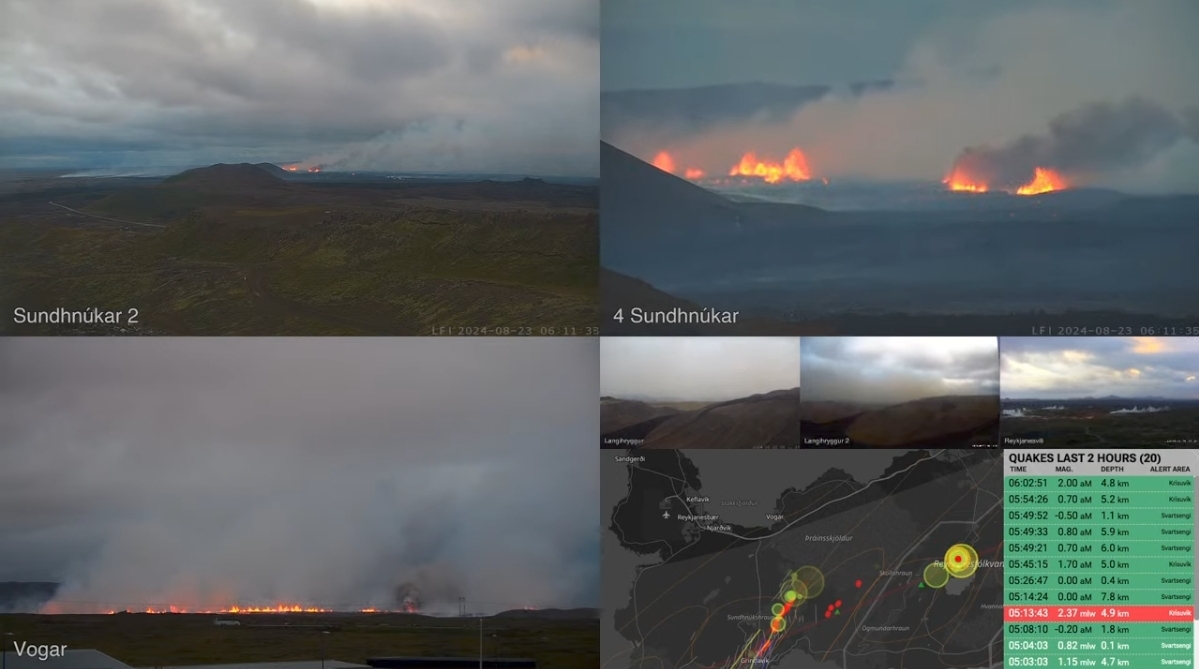


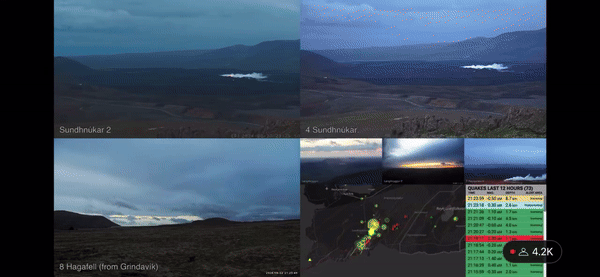


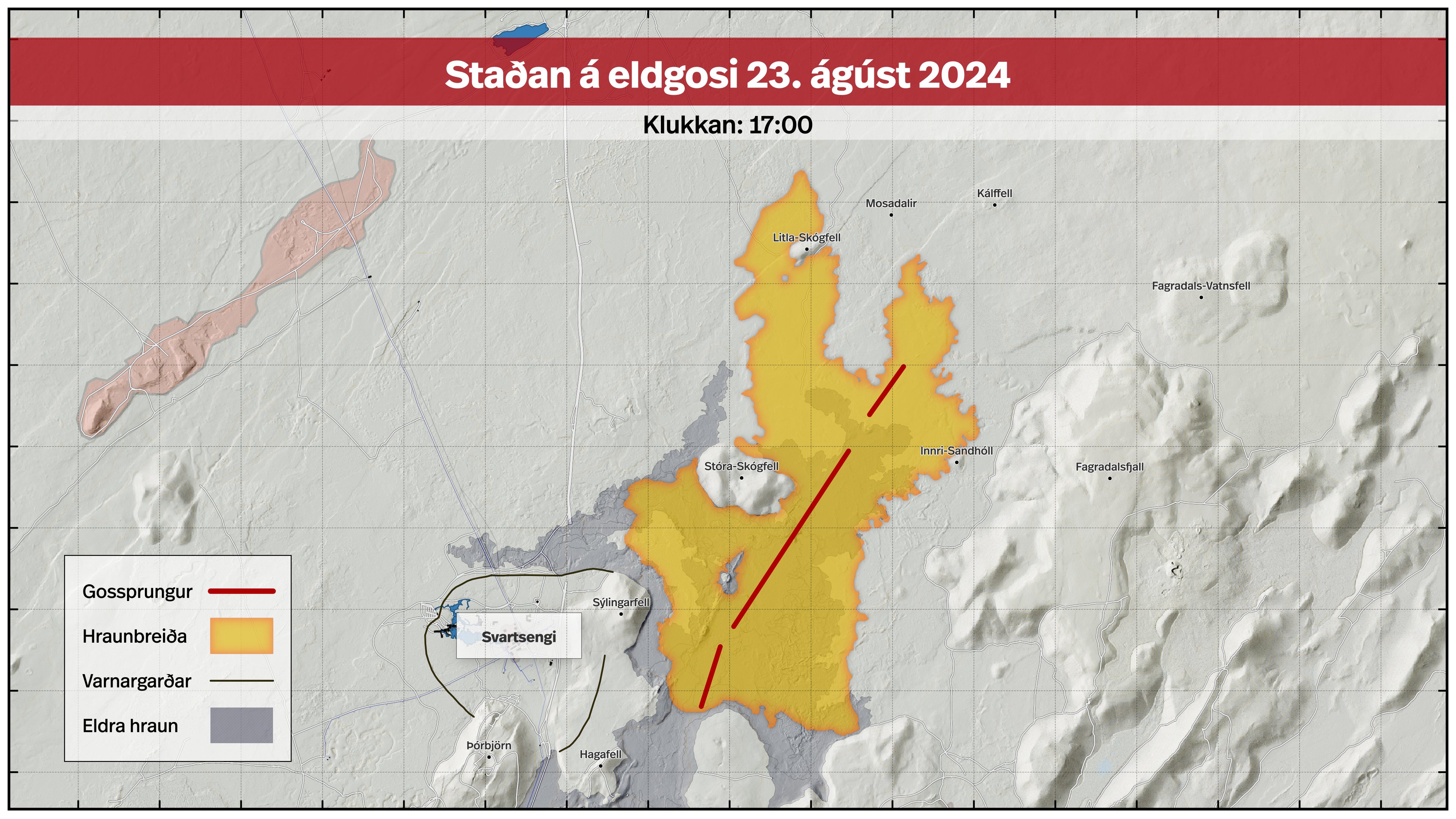


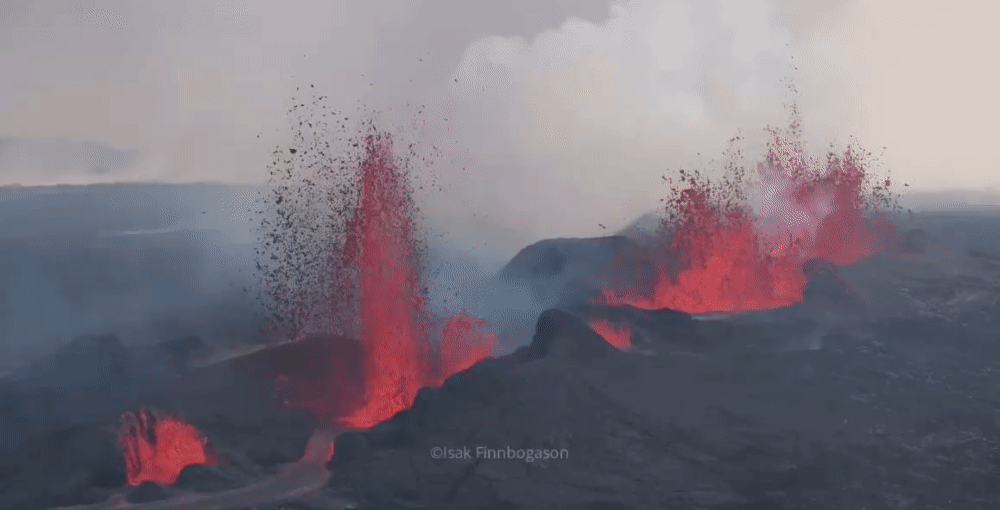
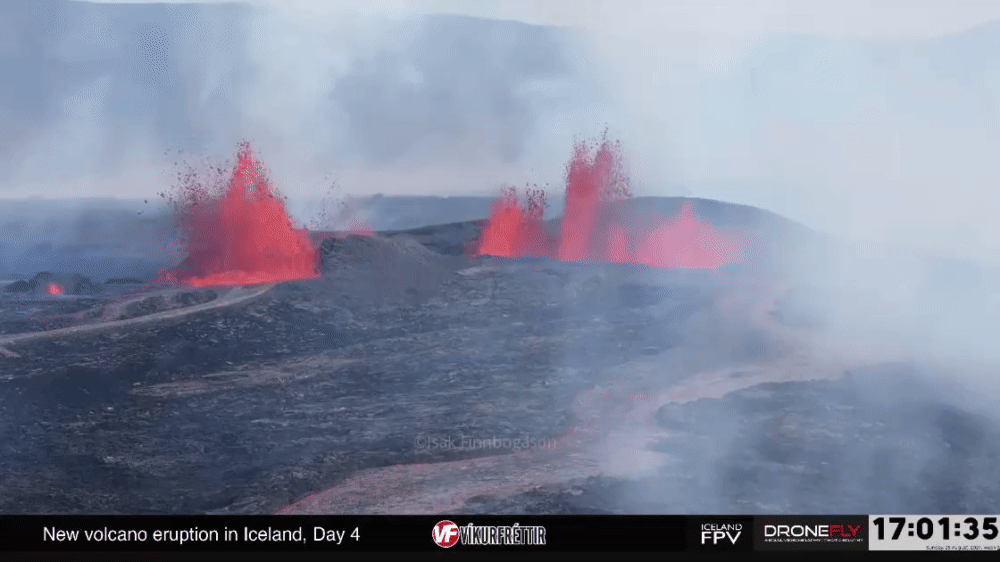

 Op
Op 
